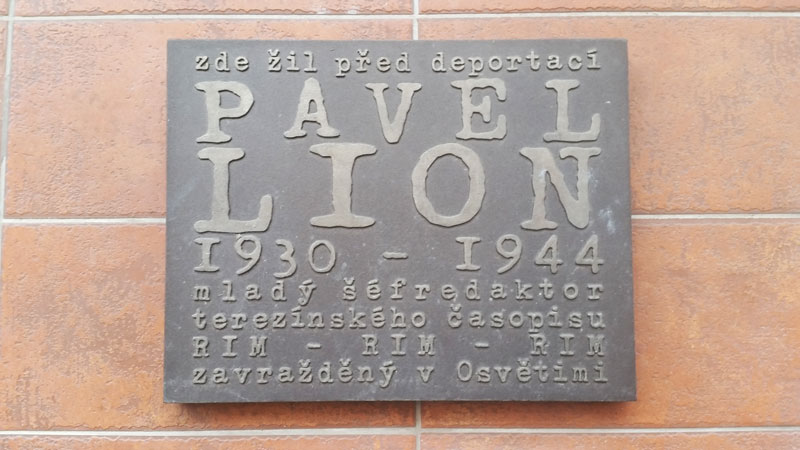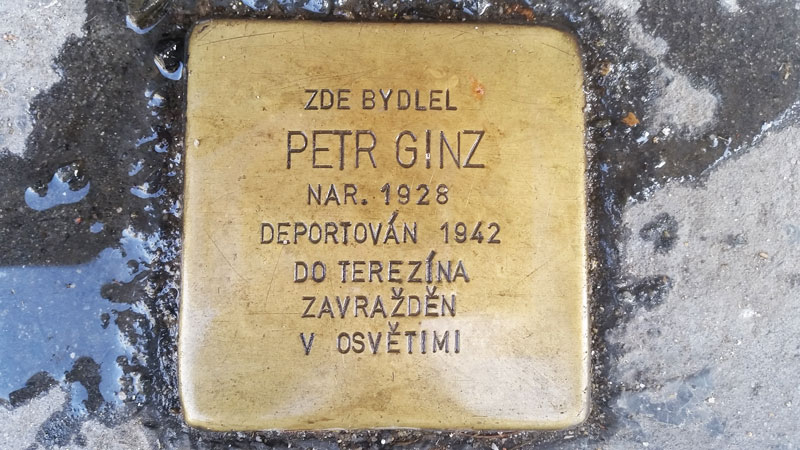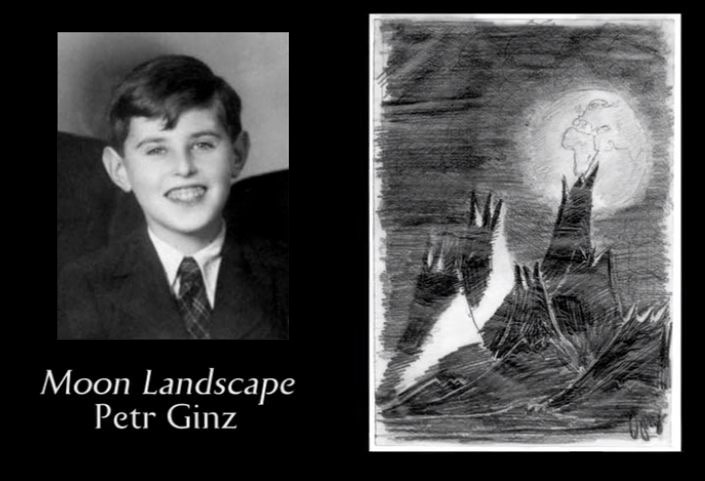The Terezin Ghetto Editors
It’s December 1941 and the Nazis had begun the deportation of the Jewish community from all parts of the Protectorate (what Czech was called during WW2) to the new internment camp called the Terezin Ghetto. By the summer of 1942 conditions were getting worse with overcrowding and the Jewish Council in the ghetto decided to put about 40 boys aged between 12 and 16 into their own building (Boys Home 1 or in other texts “Heim 1”) to remove the pressure on families looking after the young and old. So young boys who should be running around kicking balls and getting dirty have to find other things to do. In Prague you’ll often see an exhibition at the Robert Guttmann gallery of paintings and drawings by Jewish children in Terezin. But some turned their attention to publishing and this post is about two of the editors.

The Magazines
There were at least 10 different publications at Terezin between 1942 and 1944 often within individual dormitories. The format was largely the same in that it was to be A5 size (due to the shortage of paper), initially type-written until supplies ran out and then mostly hand-written (remember that to be caught writing this magazine meant being punished either by labour, beatings or restricting food rations). So for the more popular publications at the end of each week they hoped to have written one magazine between 10 and 20 pages filled with content. How they published it is one story. WHY they published it is the real story.
The Content

By 1943 the Terezin Ghetto had Jewish kids from Czech, Slovakia, France, Poland and Denmark but content was mostly in Czech language and varied based on who was publishing the magazine. “Bonaco” was a publication aimed at girls in the camp. “Domov” was aimed at boys who were interested in detective stories, puzzles and how things worked. “Rim Rim Rim” leaned towards short stories, poetry and daily life.

“Vedem” was also short stories, critical thinking and a detailed look at daily life including interviews with others who worked in the Terezin Ghetto. From February 1943 there was a regular column called “Ramblings Through Terezin” that provided one of the most accurate records of daily life in the camp. Children were encouraged to write about their own interests and memories but no published story ever had a real name. Synonyms were used. Although written and published by children, the content was often far from childish and the publications were also read by the elders of the ghetto.
Pavel Lion
The plaque to Pavel Lion is pictured at the top of this post and was installed where he used to live in the Karlin district. It reads “here lived, before being deported, Pavel Lion 1930-1944, young chief editor of the Terezin magazine RIM-RIM-RIM, murdered in Auschwitz”. He was deported to Terezin with his mother and younger brother in late December 1941. There is no photo of him and largely no record of his first two years in Terezin but by February 1944 three of the smaller publications came together and Pavel Lion became co-editor of “RIM-RIM-RIM” which went on to release 21 weekly and special editions. He was 14 when he died at Auschwitz on October 14th 1944.
Petr Ginz

By far the most well known of the Terezin Ghetto editors was Petr Ginz whose Stumble Stone is pictured. By 1942 he had already left the regular school system and had enrolled in a Jewish school for exceptionally talented children. His father was Jewish but not the mother. Probably due to his father’s work as a translator, the parents stayed in Prague until 1945 but the Nazis had a rule that any child of “mixed” parentage had to be sent to Terezin after their 14th birthday. By the time Petr Ginz arrived there on October 22nd 1942 aged 14 and a half he was immediately sent to Boys Home 1 (Heim 1). He began his magazine “Vedem” not long after arriving (in Czech it translates as “We Lead”). The fact that so much is known about him and the Vedem magazine is because of three things. His parents and sister survived the war so Petr’s pre-1942 material was kept. Fifteen of the boys involved in the publication of Vedem survived the war. Lastly, Sidney Taussig, one of those boys (and son of the Terezin blacksmith), rescued a stack of the Vedem magazines and buried them for later retrieval.
I’m not going to do a bio on Petr Ginz but it’s clear that by the age of 14 he was already a writer and illustrator. His fascination with adventure stories in the style of Jules Verne gave him imagination and this coupled with a tremendous creative drive made him the perfect editor keeping other kids busy documenting their lives, hopes and dreams. In almost 2 years Vedem published 83 issues of which 53 were hand-written. If you browse the Vedem Terezin website you’ll notice that there is an option to translate into Esperanto. This was because his father spoke it and Petr Ginz considered it as one of his native languages (Czech being the other). Also take time to browse the Vedem Underground website for more info on the magazine, the teaching aids and ongoing workshops.
The Moon Landscape

In his diaries, Petr Ginz illustrated a rocket travelling from earth to the moon called the “Moon Landscape”. There is a little Short Film Trailer which shows it and a man called Ilan Ramon. He was the first Israeli astronaut that flew in space so he took a copy of that picture with him but he never made it back to Earth. Ilan Ramon was on the Space Shuttle Columbia which was destroyed on re-entry on February 1st 2003. It would have been the 75th birthday of Petr Ginz.
In 2018 a second copy of the picture was taken to the International Space Station. In 2004 a newly discovered asteroid was named “50413 Petrginz”. In 2005 the Czech post office released commemorative stamps which included the Columbia crew and Petr Ginz’s Moon Landscape picture. Earlier I said that WHY they published was the real story. It’s summed up best by the quote below.
They tore us unjustly from the fertile ground of work, joy, and culture, which was supposed to nourish our youth. They do this to destroy us not physically, but spiritually and morally. Will they succeed? Never!
Petr Ginz, 1942
Something Related or a Few Minutes Away
Memorial – Terezin National Suffering Memorial
Memorial – Pinkas Synagogue National Holocaust Memorial
Memorial – Prague Stolpersteine Project
Jewish Prague – Journey of a Torah Scroll
